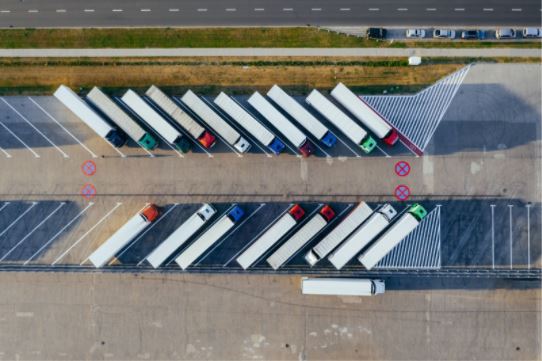Are you looking for ways to reduce the day-to-day costs of managing your fleet? For many businesses, having a fleet is vital to operate and, as such, looking for cost-effective ways to manage the fleet without cutting it completely from the budget.
Reduce the Fleet
The first option is to assess the size of your fleet and analyze how efficiently it is being used. While it can cut costs 100% per vehicle, you need to balance this saving against the extra work required by your remaining fleet to cover the loss of any vehicles.
Reduce Maintenance
Maintenance costs can really drive up how much you spend on your fleet each year. Roadside breakdowns can cost on average $334 per vehicle. If you are getting work done as and when required, looking into other options such as on-site maintenance and upkeep can reduce the likelihood of vehicles breaking down unexpectedly.
Insurance
Insurance premiums are largely something you cannot control and are influenced by various external factors. One factor that you can control is the safety record of your fleet. This means ensuring all drivers are driving correctly and courteously and reducing the risk of accidents. Reduce your premiums by installing dash cams for any unavoidable risks and providing evidence in the event of claims against your insurance.
When looking at small fleet truck insurance, look for specific benefits that help you save money on your running costs even further. Many companies offer discounts for services such as tire replacements with third-party companies.
Fuel Consumption
Fuel is frequently the second largest variable expense faced by fleet managers (after depreciation). Around 53% of fleet managers predict they will overshoot their fuel budget each year due to inefficiencies, most notably poor route planning along with traffic congestion and roadworks.
Fleet managers should be on the lookout for any increases and maintain a proactive fuel management policy at all times. Even when fuel prices are steady, practices such as obtaining fuel-efficient technology, vehicle weight reductions, more transmission gears (e.g., 8- to 10-speeds), and appropriate drive types should be maintained.
Updating Your Vehicles
Many companies encourage people to stay with their vehicles until they are no longer efficient; however, in some cases, this would actually be causing you more money than upgrading to a newer model. This line of thinking stems from older practices and being unable to afford to buy a newer model.
Reducing vehicle lifecycle costs necessitates understanding how to optimize replacement cycles and adhere to suitable replacement cycles. Best-in-class fleet organizations use economic-based replacement planning tools to identify the appropriate vehicle replacement lifecycles objectively.
Reduce Operating Costs
Assess all the staff involved in managing staff and buildings and consider if their role is vital to your fleet management operations. Analyze your tech systems and utilities along with other relevant factors unique to your company.
There is no exact formula for working this out; however, once you identify every on-site cost associated with your fleet and management operation, you can start assessing areas you can cut costs and save money.



